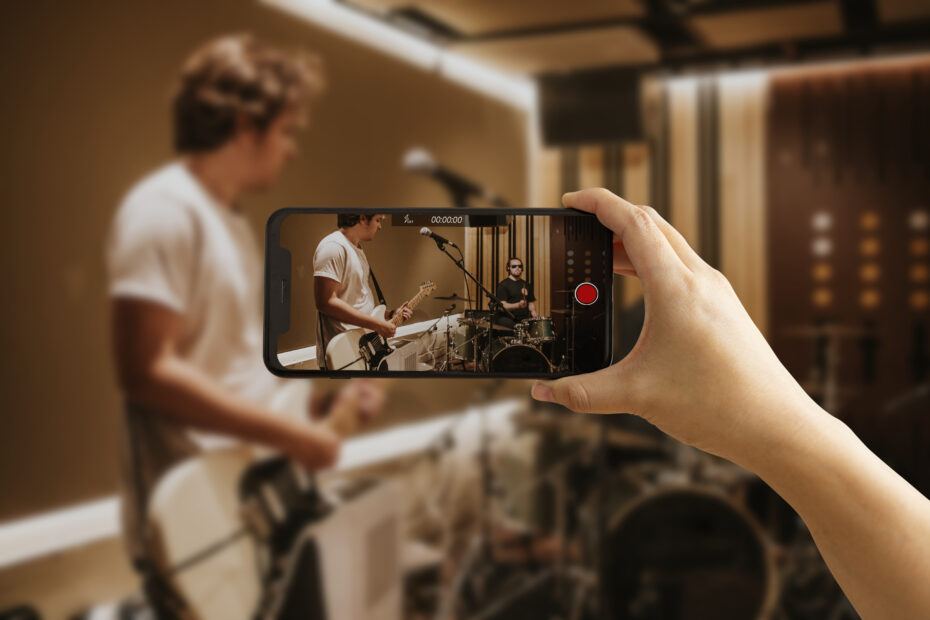Empower Your Creativity: The Ultimate Interactive Video Creator Guide
Are you ready to take your video creation skills to the next level? Interactive videos are rapidly becoming the cornerstone of engaging content, offering viewers a dynamic and immersive experience. The key lies in empowering your creativity through innovative storytelling techniques and interactive features that captivate your audience like never before.
By embracing interactive elements such as clickable hotspots, branching scenarios, and quizzes, you can transform passive viewers into active participants. This not only boosts engagement but also allows you to tailor the viewing experience based on individual preferences. Think about the endless possibilities of crafting a narrative where viewers can choose their own path and shape the outcome. It’s time to unleash your imagination and discover the limitless potential of interactive video creation.
1. Understanding Interactive Video Creation
Imagine the possibilities when viewers are no longer just passive participants in your videos, but active engagers. By incorporating clickable hotspots, you open a gateway for users to explore content at their own pace and delve deeper into topics that interest them. This interactive approach not only enhances user engagement but also provides valuable insights into user preferences and behaviors.
Branching scenarios add a new layer of immersion to your videos by allowing viewers to make choices that impact the direction of the narrative. As they navigate through different paths based on their decisions, users become more invested in the content and feel a sense of control over their viewing experience. This dynamic storytelling technique keeps viewers on their toes and encourages multiple viewings as they explore all possible outcomes.
Quizzes are a fun and effective way to test knowledge retention while keeping viewers engaged throughout the video. By integrating interactive quizzes seamlessly within your content, you transform passive learning into an active process that fosters better information retention. Additionally, quizzes can serve as valuable feedback mechanisms for creators to assess audience comprehension and tailor future content accordingly.
2. Choosing the Right Tools and Software
By integrating interactive quizzes into your videos, you not only test your viewers’ knowledge retention but also enhance their engagement and interaction with the content. Quizzes provide a fun and dynamic way to reinforce key concepts while keeping the audience invested in the video. Additionally, they allow for immediate feedback, enabling viewers to assess their understanding of the material in real-time.
Moreover, quizzes can be customized to cater to different learning styles and preferences, ensuring a personalized experience for each viewer. This level of interactivity not only makes the video more entertaining but also increases the likelihood of information retention. Furthermore, by gamifying the learning process, quizzes can transform passive watching into an active learning experience that stimulates critical thinking and promotes deeper engagement with the material.
3. Planning Your Interactive Video Content
This level of customization extends beyond just selecting the content of a quiz. With interactive video creators, users can tailor the design and layout of the quizzes to align with their branding or desired aesthetic appeal. This creates a cohesive and engaging experience for viewers, enhancing not only the educational aspect but also the overall engagement with the content.
Moreover, quizzes can also be adapted to suit different learning paces and preferences. For visual learners, incorporating images or diagrams into quiz questions can help reinforce concepts in a more vivid way. On the other hand, auditory learners may benefit from audio cues or explanations provided within the quizzes. By catering to diverse learning styles, interactive videos ensure that information is presented in a format that resonates best with each viewer, ultimately leading to a more impactful and memorable learning experience.
4. Designing Engaging Interactive Elements
Moreover, quizzes can also be adapted to suit different learning paces and preferences. For visual learners, incorporating images or diagrams into quizzes can enhance the learning experience by providing a more concrete representation of the concepts being tested. This not only makes the quiz more engaging but also helps visual learners better understand and retain information. By customizing quizzes with visuals, educators can cater to diverse learning styles and ensure that each student has an equal opportunity to demonstrate their knowledge.
Additionally, adapting quizzes for different learning preferences allows for personalized learning experiences. Students who prefer hands-on activities can benefit from interactive elements in quizzes, such as drag-and-drop features or clickable hotspots. These interactive components not only make the quiz more enjoyable but also encourage active participation and critical thinking skills development. By offering a variety of formats and options within quizzes, educators can empower students to take ownership of their learning journey and engage with course material in a way that best suits their individual needs.
5. Implementing User Interaction and Feedback
Adapting quizzes to cater to various learning preferences can significantly enhance the overall educational experience. By customizing quizzes according to different styles of learning, such as hands-on activities, visual aids, or auditory cues, educators can create personalized learning paths for each student. This not only helps in engaging students but also allows them to absorb information more effectively and retain knowledge for a longer period.
For students who thrive in hands-on activities, interactive quizzes can provide a practical approach to learning that goes beyond traditional text-based assessments. Incorporating elements like drag-and-drop questions, simulations, or virtual labs can simulate real-world experiences and offer a holistic understanding of the subject matter. This hands-on engagement taps into the kinesthetic learning style, leading to better comprehension and retention of complex concepts while making the learning process more enjoyable and immersive.
6. Testing and Optimizing Your Interactive Videos
For students who thrive in hands-on activities, interactive quizzes are a game-changer in the world of learning. These quizzes provide a practical approach that goes beyond traditional text-based methods by engaging multiple senses and promoting active participation. By incorporating elements such as videos, images, and audio clips, students can immerse themselves in the material and retain information more effectively.
One of the key advantages of interactive quizzes is their ability to cater to various learning styles. Visual learners can benefit from the use of graphics and videos, auditory learners can engage with audio prompts, while kinesthetic learners can interact with hands-on exercises. This personalized approach not only enhances understanding but also fosters a deeper connection to the subject matter. In essence, interactive quizzes present a dynamic platform for students to explore concepts in a fun and engaging way that suits their individual preferences.
7. Conclusion: Unleash Your Creativity with Interactive Videos
One of the key advantages of interactive quizzes is their ability to cater to various learning styles. Visual learners, in particular, can greatly benefit from the use of graphics and images in these quizzes. Visual aids help these learners process information more effectively and retain it for a longer period.
By incorporating visually stimulating elements into interactive quizzes, educators can create a more engaging learning experience for visual learners. This not only enhances their understanding of the material but also allows them to make better connections between concepts and information presented in the quiz. Additionally, graphics can help break down complex topics into simpler, more digestible parts, making it easier for visual learners to grasp difficult concepts.
Read more:
Revolutionize Your Sales: The Power of Interactive Sales Tools










